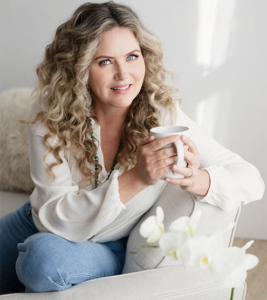
(Photo credit: inherimagephoto.com)
Keep it simple,” said the Dalai Lama. “There is no need for temples; no need for complicated philosophy. Our own brain, our own heart is our temple; our philosophy is kindness.” Meditation, or contemplation, is the seventh limb of Yoga in Patanjali’s Yoga Sutras. These eight steps basically act as guideposts on how we can live a more meaningful and purposeful life. They invite us to live a moral and ethical existence as we bring our attention towards ourselves to live ‘healthy’ in all the many understandings of this word. And, if you are a Yoga teacher, this is one of the very first things we are taught during teacher training.
It can overflow from there and become a lifetime of curiosity and understanding. For over 20 years as a Yoga teacher, I’m often referred back to the Sutras for guidance and, as Patanjali might say, to refine personality, or gain more awareness in the body, and develop an energetic awareness of ourselves and all beings. All of this is supposed to lay the foundation and prepare us to delve deeper into our senses, mind and being the higher vibrational state of consciousness that is available to not just a few, but to all of us. Returning to ourselves doesn’t always feel good, and what if we have injuries that make it uncomfortable to sit for longer periods of time? When I first tried meditating, there was so much pain in my lower back, I chose not to continue, and did asana practice instead.
Years into practicing I realized that I was identifying with the flaws of my body, and practicing meditation was just too difficult. Some days I wouldn’t practice and other days I would try to push through the pain, and in the process, I’d only create more unease. I didn’t understand that these parts of me needed to be held in awareness — to embrace what was there, as it is, by seeing it honestly without trying to change it. What I’m learning is that in the days when I offer myself more patience, and perhaps even return to a beginners mindset, I physically feel my back pain decreasing. To bring awareness to the areas that need more breath, acceptance, and unconditional love feels life changing.
Every day is new, every Yoga shape and moment is new, so if we go into practice thinking that we know how it’s going to go, then we lose a kind of purity that our practice is there to teach us. Simply slowing down to feel the present moment awareness is enough. This feeling of being present feels like visiting an old friend, communing in a Yoga pose, or folding the laundry mindfully.
In a nutshell, meditation is a process that results from a successful turning inward of the mind and dedication that there is a higher understanding that is more radiant than what the mind and our intellect can provide. With it, we usually understand that life or our life isn’t only about our mental or primal way of being, it is all encompassing. And in building a consistent meditation practice we flow with the river and see that meditation is not just a moment in time where we sit, it is also not separate from life. Through meditation we become more courageous and can work through challenges more calmly, while centering ourselves into our bodies.
If you need to solve a problem just sit and observe what’s present, without changing anything or even finding a solution — just witnessing. During meditation, when we observe from our head to our heart, our mind becomes less busy and solutions to problems arise from a calmer, more balanced place. I find that when my mind is left on its own to solve a problem, complications based on old excuses and interpretations — that are not my truth — are introduced. Now when I witness my mind, I hear my inner voice asking me whether I’m anchored in thoughts and images, in the body, or in the space outside, and whether I’ve entered into a higher space where the ordinary mind can be witnessed.
But how do we maintain a practice like this? For me, I forget so easily, but if I get up just for a few minutes, several times in a day, moving around enough to embody my body, all feels okay in the world. Sometimes, it’s by feeling the sun’s rays on my face, sipping some tea real slowly, or petting my dog, and I’ll remember my practice again. Once we’ve experienced this space, we don’t have to blindly accept our belief systems or other’s opinions, thoughts, and judgments about things. See for yourself what’s true. When your thoughts and emotions vanish, when you are in direct contact with the actual nature of your mind, then no one’s opinions, judgments, or views will sway you.
Everyone can be a meditator right where their body is today. Just by making time for meditation is like building a temple of love in our heart.
About the Author:

Mellara Gold, E-RYT has practiced and taught meditation and Yoga for 25 years, influenced by Hatha Yoga, Bhakti Yoga, and Buddhism. Her radiant and inspirational teaching blends the physical and spiritual aspects of Yoga with self-inquiry. She leads online and in-person workshops, retreats, and trainings and is a regular contributor to online journals and other lifestyle and spiritual magazines. (Reprinted from Om Yoga & Lifestyle magazine)


